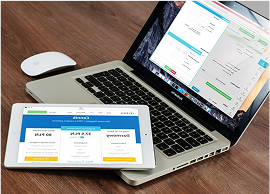In today’s digital landscape, personalization is not just a trend—it’s an expectation. Consumers demand tailored experiences that cater to their preferences, behaviors, and needs. Brands that fail to personalize risk losing relevance and engagement. Here’s everything you need to know about personalization and how to get it right.
Why Personalization Matters
Personalization enhances customer experience, increases engagement, and drives conversions. According to studies, 80% of consumers are more likely to buy from brands that offer personalized experiences. It fosters loyalty by making customers feel valued and understood.
Key Elements of Personalization
- Data Collection & Analysis
- Gather customer data from multiple touchpoints, including browsing history, purchase behavior, and interactions.
- Use AI and machine learning to analyze patterns and predict customer preferences.
- Segmentation & Targeting
- Group customers based on demographics, behavior, and interests.
- Deliver personalized content, offers, and recommendations.
- Omnichannel Consistency
- Ensure personalization is seamless across all platforms—website, email, social media, and in-store.
- Maintain a unified customer profile for a consistent experience.
- Real-Time Customization
- Use dynamic content to adapt in real-time based on customer actions.
- Examples include personalized product recommendations and tailored email campaigns.
Best Practices for Personalization
- Prioritize Privacy & Transparency: Consumers value personalization but are concerned about privacy. Be clear about data usage and provide opt-in options.
- Leverage AI & Automation: AI-driven tools can analyze data at scale, enabling hyper-personalization without manual effort.
- A/B Test & Optimize: Continuously test different personalization strategies to see what works best for your audience.
- Avoid Over-Personalization: While customers appreciate relevance, too much personalization can feel invasive. Strike the right balance.
Examples of Successful Personalization
- Amazon: Uses browsing and purchase history to recommend relevant products.
- Netflix: Personalizes content recommendations based on viewing history.
- Spotify: Creates curated playlists like “Discover Weekly” based on listening habits.
The Future of Personalization
Advancements in AI, predictive analytics, and first-party data collection will further refine personalization. Brands that stay ahead by leveraging these technologies while maintaining trust and transparency will thrive in the personalized marketing era.
Final Thoughts
Personalization is no longer optional—it’s essential. Brands that understand their customers, leverage technology, and prioritize data ethics will build stronger relationships and drive greater business success. Start personalizing today to stay competitive and relevant.

